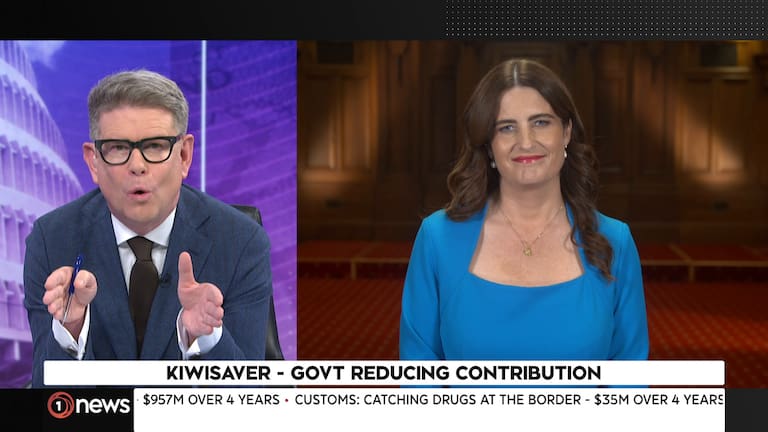Barbara Dreaver returns to Samoa and finds signs of hope four years after the measles epidemic which killed 80 people, mostly children.
The gate is locked.
A dog barks but everything is still in the oppressive heat, not even a leaf stirs at the Samuelu compound in Vaitele.
Then there’s a flurry of movement and a woman runs to open up for us. She looks familiar and then a sudden flashback: a group of women crying, howling and holding each other, huddled around the bodies of two babies.
Local reporter Lagi Keresoma and I glance at each other. We were last at this home on November 18, 2019 for the funerals of one-year-old Lologa Samuelu and six-month-old Isaako Junior who died within two days of each other of the measles.
The level of sadness and deep shock of the family was harrowing – but it wasn’t our grief so Keresoma and I had gone behind a hedge to cry briefly, gathering ourselves so we could get on with our job.
Cameraman Raymond Moore had stayed, eye fixed through the viewfinder capturing powerful images, paying tribute to two young lives.

Now we are back and there are hugs with Isaako Junior’s mum Shuvourn and her father Gafo Samuelu Isaako, the grandfather of the two late children.
It’s clear that Shuvourn is still hurting – how does a mother heal after losing a baby. Tears roll down her face as I ask her how the family are coping four years on.
She speaks in Samoan and Keresoma translates her softly-spoken words.
“To date we feel the pain but we also feel his presence and we miss him so much,” she said. “It’s not easy losing him, the children are a comfort and I am bringing them up the same way I brought up my son.”
Shuvourn is adamant that parents need to take heed of the country’s Ministry of Health programme and not leave vaccinating children until something happens. She has had two children since losing Isaako Junior, and she sits cuddling them as she talks to us.
Grandfather Samuelu has a little shadow, wherever he walks his grandson follows him. Sitting at his side, the four-year-old gazes at him as he talks. Clearly the bond is strong.
There are eight children in the compound and Samuelu says he regrets not spending more time with the two children who died.
He has now given up his job to be a fulltime carer because he says the responsibility for the children’s health rests with the parents. “That’s what I am doing now. I look after the kids and remind my daughters when to take the kids for the injection and I cook for the children who aren’t in school,” he said.

Aiono Dr Alec Ekeroma, who was based in New Zealand as a physician during Samoa’s 2019 measles epidemic, is now the island nation’s Director-General of Health.
His experience is vast – he taught at Auckland University’s medical school and was Head of Department of Obstetrics and Gynaecology at the Wellington School of Medicine.
In 2018 the MMR (measles, mumps, rubella) vaccination rate in Samoa was only at 28% - now the first MMR vaccine is at 92% and second one is 72%. Ekeroma said it is, sadly, the measles epidemic which has made a difference as people now know firsthand that more than 80 lives were lost, most of them children.
But there have been some big policy changes too. When the measles epidemic broke out in 2019, families had to travel to the hospitals and clinics to get their children vaccinated and transport was often a problem. Ekeroma said this has now changed.
“The Ministry of Health has actually adopted a more proactive process of getting out to the villages.
"When we heard there was a case, a possible case, of measles in American Samoa we had campaigns to go door knocking and taking vaccinations to the villages but also to engage the village committees, the village leaders in the process of raising awareness,” he said.
The families we speak to all tell us how things have changed and how it needed to. In 2019 we visited a family who had children with measles but they had no way of getting help or their children to hospital.

Medical teams bring comfort
That’s because they lived in a village where there was no cellphone reception, they had no vehicle and it was a walk of several kilometres to catch a bus – and that was if they could afford the fare.
In the past, nurses would visit the villages to do checks on the children, not just for vaccinations but also basic health checks. The Samuelu family tell me seeing medical teams in their area every month gives them some level of comfort.
Siana Lauano agrees. We met her and her husband Iosefa Iupeli in December 2019. Their two-year-old Siliva had been dead a week but they were unable to get his body back from the hospital morgue because, they were told, a post-mortem needed to be done.
We followed them as they went to the police station and then to the Prime Minister’s office to try to get their child’s body home so they could bury him. But to no avail. We meet up with Siana near where she has a little shop.
She tells us they even went to court to try and get their child’s body back but ended up feeling far worse.

“We filed a petition to release the body of our baby but what the judge said, we felt we were being blamed because our baby was not vaccinated,” she said. “What the judge said didn’t give us any peace – we were instructed to return to court a month later but we never went back.”
The family didn’t get Siliva back for a month and, when they did, Siana couldn’t hold or look at him as she didn’t want to see the cuts from the post-mortem on his torso.
“To date we have no idea why they did a post-mortem on our child,” she said.
Her children are now vaccinated and she says the medical teams that visit the village are helpful.
“We are slowly recovering,” she said.
Next to Siliva’s grave at the family house, his seven-year-old cousin Lagia is buried. They died only one day apart.

The last time we were here there was an empty, newly tiled grave waiting for baby Siliva. Lagia’s grave was covered in fresh concrete.
I stand with Lagia’s older sister Taulagi Palu next to them and she says the family has struggled with their loss.
“I raised her, my parents were working so every day I was taking care of them, especially the one who died and the youngest one – they called me mum,” she said.
Taulagi says her dad, as head of the family, has stayed strong to comfort them but her mum is still very hurt.
“From the moment my sister passed away we have to pray to God to help us go through the hardest time,” she said.

There are numerous children running around and she sadly said they have all been vaccinated, it’s been a terrible lesson. But then a little girl clambers into her arms and Taulagi breaks into a smile as the other children dance around her laughing. Samoa is still in pain – but life continues.


















SHARE ME